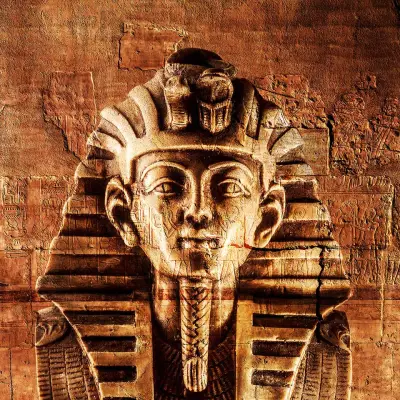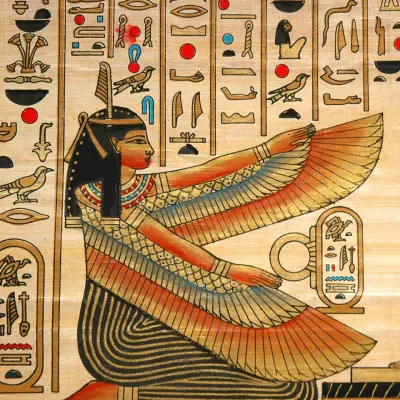Have you ever watched a summer storm roll in and felt the air shift just before the first clap of thunder? In Japan, that electric moment has long been linked to two powerful deities: Raijin, the god of thunder and lightning, and Fūjin, the god of wind.
If you’re curious about the stories that swirl around these stormy figures, we’ll cover everything you need to know in this guide.
Jump to:
- Who Are Raijin and Fūjin in Japanese Mythology?
- Raijin and Fūjin’s Myths
- The Role of Raijin and Fūjin in Japanese Storytelling
- What Powers Did Raijin and Fūjin Possess?
- Symbols Associated with Raijin and Fūjin
- Raijin and Fūjin's Lineage and Connections
- Why Are Raijin and Fūjin Special?
- Raijin and Fūjin in Modern Culture
- Raijin and Fūjin’s Worship and Legacy
- Frequently Asked Questions About Raijin and Fūjin
- Study Japanese Mythology for £29
Recommended for you!
Best SellersWho Are Raijin and Fūjin in Japanese Mythology?
Raijin (雷神) literally means “thunder god” in Japanese. He’s often shown with a fierce red face, wild hair, and a circle of drums, each beat said to summon lightning. By contrast, Fūjin (風神), whose name translates as “wind god”, carries a great bag of winds slung over his shoulder, ready to be unleashed. Together, these Japanese gods rule the skies: Raijin hurls lightning, while Fūjin drives the winds that carry the storm.
In artwork across temples and scrolls, the pair are nearly inseparable, standing guard at gates, swirling through clouds, or racing across panels on folding screens. They are not merely destructive, though. In many myths they also cleanse the air, make way for rain that nurtures crops, and signal seasonal change.
Raijin and Fūjin’s Myths
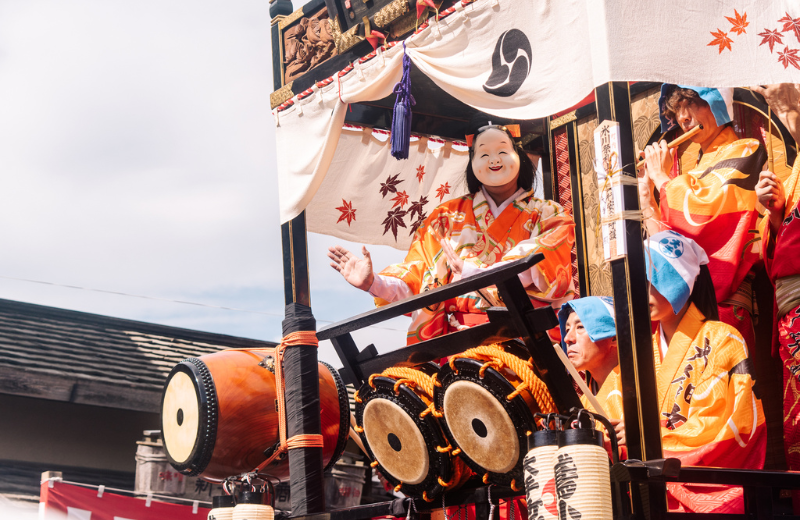
Raijin and Fūjin appear in many traditional tales that blend creation, conflict, and natural harmony. These stories reflect the role they play in shaping the world and supporting human life.
The Creation of Order from Chaos
One popular tale places the two brothers at the creation of the world. After the sun goddess Amaterasu brought light, chaos still ran wild. Raijin and Fūjin were charged with taming the unruly skies. Fūjin’s bag controlled the powerful gales that once tore across the land, and Raijin’s drums set the rhythm of rainfall that ended drought. Their combined efforts helped bring stability to a once-turbulent realm, allowing life to flourish under the sun.
Defenders of the First Emperor
Another story finds them siding with the heroic emperor Jimmu, said to be Japan’s first ruler. As invaders approached, Fūjin whipped up storms that disoriented the enemy fleet, while Raijin’s thunder scared soldiers into retreat. The divine intervention was seen as a sign that the gods favoured Jimmu’s right to rule and protect the land.
Celebrated in Autumn Rituals
In autumn festivals, children bang drums to imitate Raijin, asking him for a balanced rainfall—neither flood nor famine. These rituals honour his power and express gratitude for stable weather and healthy harvests. Fūjin is often acknowledged in parallel, as his winds help carry seasonal change and refresh the air for the new cycle.
The Role of Raijin and Fūjin in Japanese Storytelling
From Noh theatre masks to contemporary manga panels, Raijin and Fūjin bridge old and new. Traditional storytellers use them to explore nature’s dual nature: awe-inspiring and nurturing in one moment, destructive in the next. Modern writers and game designers often cast them as guardians or formidable bosses, echoing their ancient reputation.
Their image also appears in protective talismans. Merchants once hung depictions of the brothers to guard warehouses against fire (lightning) and storm damage (wind). Samurai clans carved them onto armour to call on their raw power in battle.
What Powers Did Raijin and Fūjin Possess?
Raijin’s powers
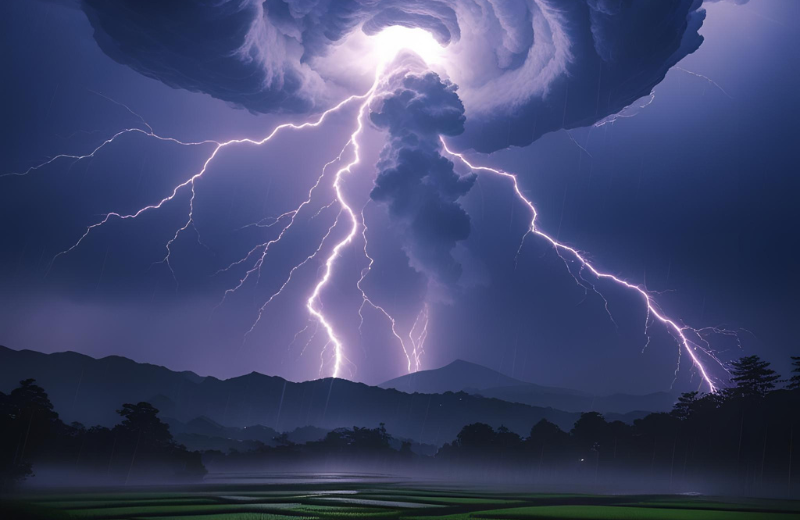
- Storm summoning – beats his circle of taiko-style drums, generating thunderclaps
- Lightning control – hurls bolts that split trees or ignite sacred fires
- Weather balance – in some Shintō rites, priests appeal to him to end drought or divert a typhoon
- Guardian strength – statues at temple gates scare away evil spirits, suggesting he can ward off misfortune
Fūjin’s powers
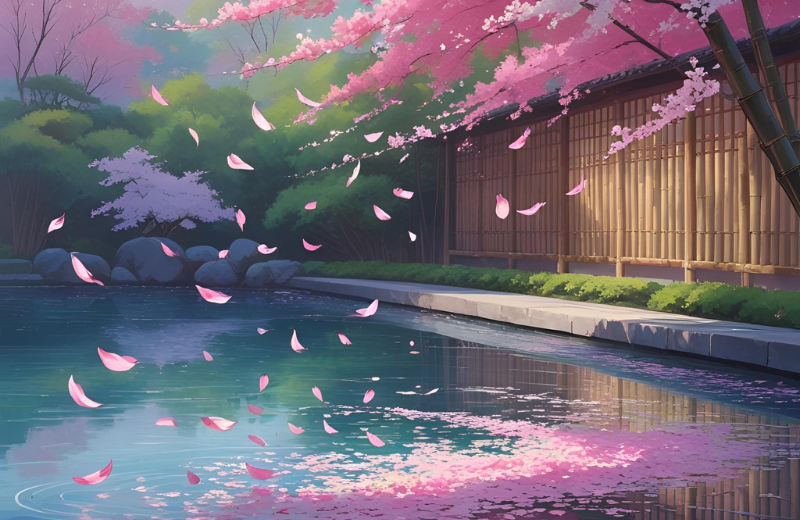
- Wind mastery – releases gentle breezes for sailors or fierce gusts that topple foes
- Climate change – ushers in seasonal winds such as the spring “haru-kaze” that disperse blossoms
- Path-clearing – legends say he blew away morning mists for the sun goddess, letting sunlight reach the earth
Symbols Associated with Raijin and Fūjin
Raijin

- Drums – eight or nine in a ring, used to call thunder
- Tomoe swirl patterns – linked to spiralling clouds and storm motion
- Red skin – symbolises protective energy and fierce power
- Magatama beads – ancient symbols of power and spirituality
Fūjin
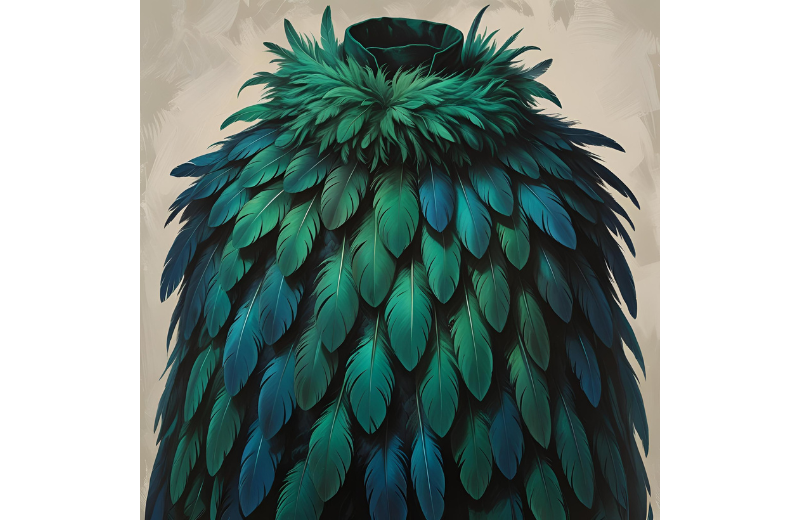
- Wind bag – large sack of wind slung over the shoulder
- Green or blue skin – reflects nature and the open sky
- Feathered cloak – connects him to birds and movement through the air
Raijin and Fūjin's Lineage and Connections
Various sources offer different accounts of Raijin and Fūjin’s origins, but many traditions trace them back to Izanami and Izanagi, the primordial deities who created the world in Japanese mythology. In versions influenced by Buddhism, the thunder and wind gods are sometimes portrayed as fierce spirits or demons—oni—who were ultimately transformed into protectors through the compassion and wisdom of the Buddha.
This transformation is reflected in their fearsome appearance, particularly in Raijin’s red skin and wild, horn-like hair, which blur the line between god and demon. Despite these demonic traits, Raijin is regarded as a kami, a divine being within Shintō belief, known for his strength and ability to ward off evil when respected and properly honoured.
Why Are Raijin and Fūjin Special?
- Balance of Opposites – They embody both destruction and renewal, reminding you that storms clear the air for new growth
- Cultural Bridge – Their imagery spans Shintō shrines, Buddhist temples, pop culture, and tattoo parlours, connecting past and present
- Practical Relevance – Farmers watch monsoon patterns, sailors track typhoons; invoking these deities was, and sometimes still is, part of preparing for natural forces
Raijin and Fūjin in Modern Culture

You might recognise Raijin and Fūjin in video games such as Final Fantasy, anime like Naruto, or even in adaptations of thunder gods within the Marvel Universe, such as in Thor storylines. Their dramatic imagery continues to inspire architects, who often place statues or motifs of the pair at museum entrances to create a sense of awe and reverence.
The image of Raijin and Fūjin together is especially popular in tattoo artwork, often chosen to represent a balance between chaos and calm, power and resilience. A Raijin and Fūjin tattoo typically symbolises the wearer’s respect for natural forces and a desire to embrace life’s turbulence with strength and confidence.
Raijin and Fūjin’s Worship and Legacy
Shintō shrines such as Kaminari-mon at Sensō-ji temple in Tokyo give Raijin (and limited space to Fūjin) pride of place. During summer matsuri, portable shrines parade through streets while chants and drums echo the thunder god’s presence.
In agriculture, rituals called taue-matsuri invite steady rain with offerings of rice cakes and the sound of beating drums. Coastal communities honour Fūjin before typhoon season, asking the god of wind to direct storms away from harbour.
Recommended for you!
Best SellersFrequently Asked Questions About Raijin and Fūjin
Are Raijin and Fūjin evil?
Early Buddhist tales label them as troublesome spirits, but later stories celebrate them as guardians who defend temple gates. Their transformation highlights how perceptions of divine power can shift across time and belief systems.
How do you pronounce Raijin and Fūjin?
Raijin is pronounced as Ray-jeen, and Fūjin is Foo-jeen (long vowels).
What does Raijin mean in English?
Literally “Thunder God”; the kanji 雷 (rai) means lightning or thunder, and 神 (jin) means deity. The name directly reflects his elemental domain and divine role.
Is Raijin an Oni?
Artwork sometimes shows him with horn-like hair, which blurs the line between god and demon, yet in Shintō he is fundamentally a kami. His fearsome look serves to ward off evil rather than represent it.
Study Japanese Mythology for £29
Interested in exploring more about ancient Japanese beliefs, traditions, and divine figures like Hachiman? The Introduction to Japanese History and Culture Diploma Course from Centre of Excellence is the perfect place to start. For a discounted price of £29, you'll learn about he spiritual stories, practices, and philosophies that shaped Japan’s past and continue to influence it today.

